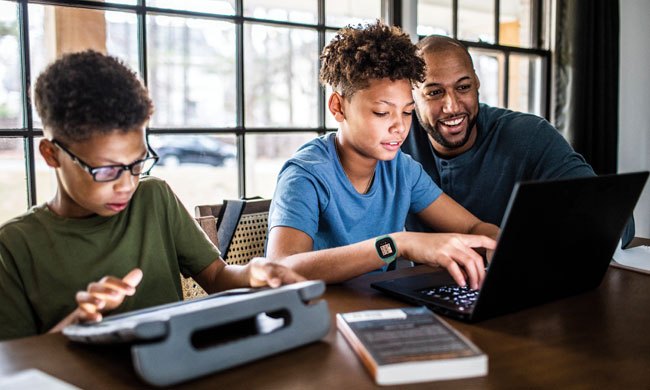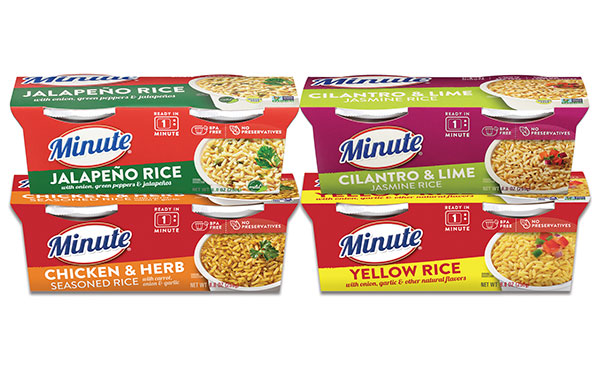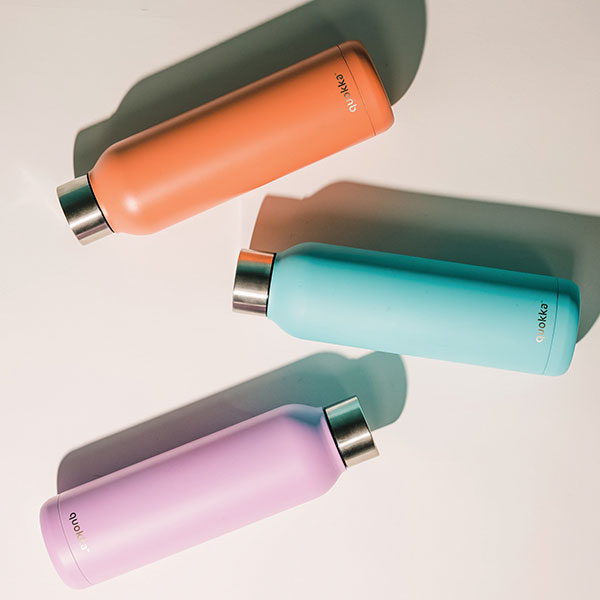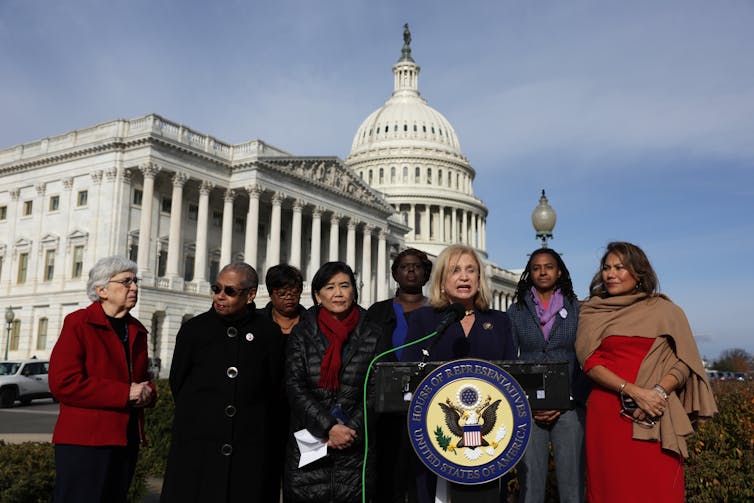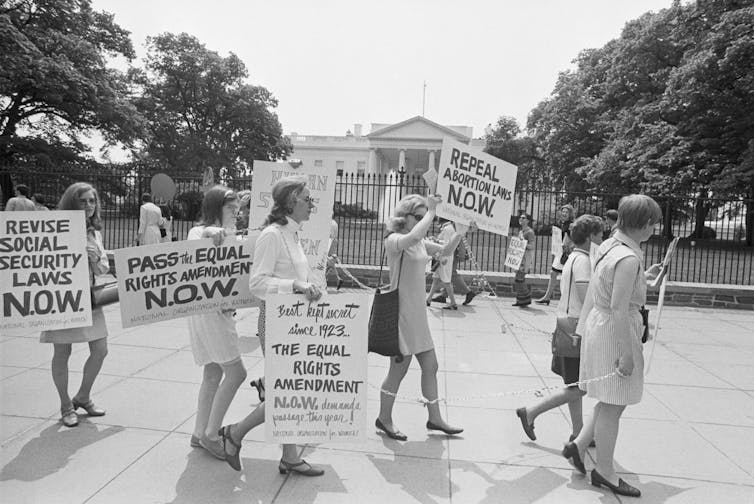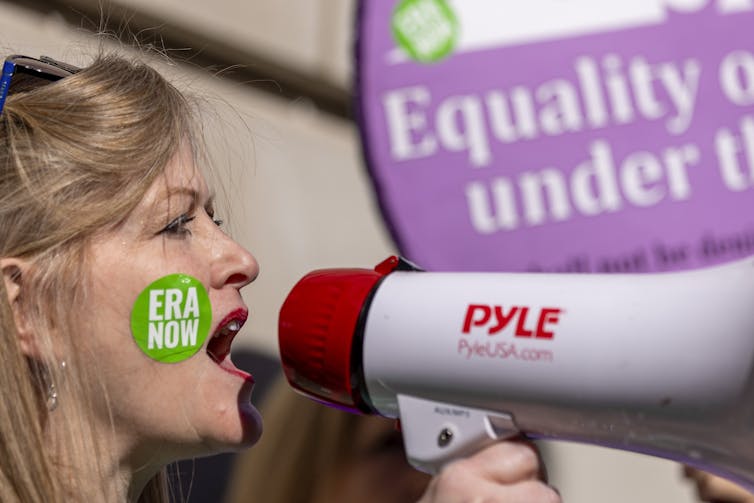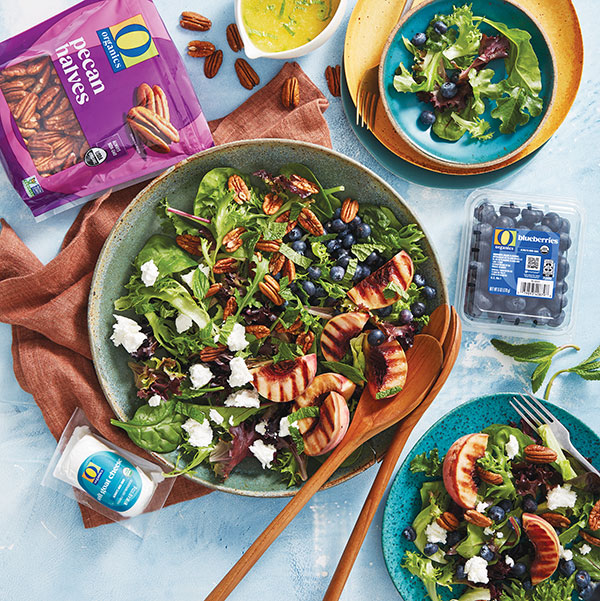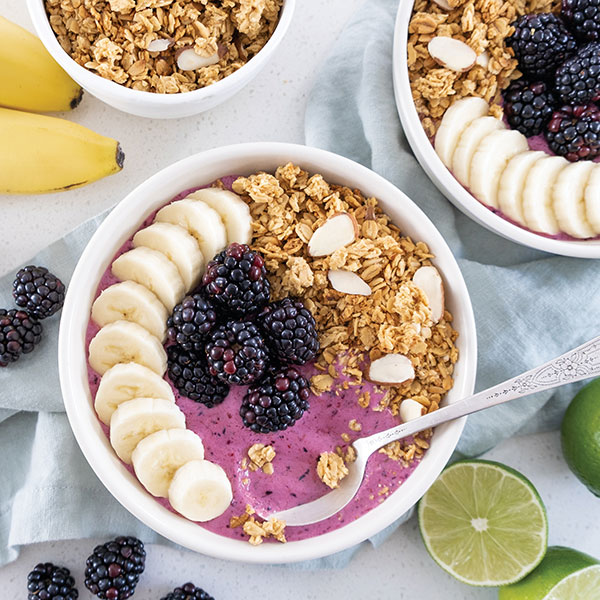Lab experiments suggest that a dose of carefully selected microbes may boost the health of these reef-building creatures and their symbiotic algae
Supermarket shelves abound with yogurt and other products chock-full of probiotics — “good bacteria” — meant to cultivate our inner microbial life. Though the evidence around these products is mixed, broader evidence shows that microbes do have outsized effects on our bodies.
Other organisms also nurture rich assemblages of influential microscopic life. And for the tiny colonial animals that manufacture the world’s coral reefs, these associations play a particularly important role: Corals rely on their microscopic algal partners — and a horde of others — to thrive. In fact, the most obvious sign of dangerous stress for a coral is bleaching: the whitening that happens when the coral jettisons its colorful algal partners that the otherwise transparent animal relies on for food.
Bleaching has happened more frequently in recent decades, affecting larger and larger areas of coral over time. Between 2014 and 2017, marine heat waves brought mass-bleaching to over 75 percent of reefs globally, with nearly a third of reefs suffering die-offs as a result. That’s a big problem. Although coral reefs cover a mere 1 percent of our oceans, an estimated one in four marine animals relies on the reefs to survive. Coral reefs also are critical for human food security, supporting 6 million fishers around the world.
The most crucial remedy for the threats facing coral reefs is to turn down Earth’s thermostat by burning fewer fossil fuels, thus reducing the greenhouse gases entering the atmosphere. But scientists are desperately searching for stopgap measures, to buy time for corals. Some are breeding corals to tolerate more heat, or the acidification of waters that accompanies global warming. Others are trying to protect reefs within marine conservation areas or by encouraging the growth of new corals in damaged areas.
Still others are working on developing coral probiotics — to boost levels of the microbes that help corals thrive — and the approach is showing some promise. Marine microbiologist Raquel Peixoto of King Abdullah University of Science and Technology (KAUST) in Thuwal, Saudi Arabia, pioneered the idea of coral probiotics, first by testing them in the lab and now by trialing them in the coral gardens of the Red Sea. The coauthor of a 2021 report, “Rebuilding Coral Reefs: A Decadal Grand Challenge,” Peixoto hopes that the approach could serve as a preventative medicine that builds resilience for feverish coral reefs.
To learn more about coral probiotics, Knowable Magazine spoke with Peixoto, who coauthored an article about the research in the 2021 Annual Review of Animal Biosciences. This conversation has been edited for length and clarity.
What sparked your interest in studying coral reefs and how the corals are affected by climate change?
I think I’ve always been very connected to the ocean. I’m a surfer. I’m a diver. And knowing that some of these ecosystems are dying is terrifying to me. It sounds a bit cliché, but I really want my children to still have corals to be able to enjoy, not only because of their ecological importance, but because of their beauty and complexity.
What do we know so far about the range of microorganisms associated with corals — something biologists call the “holobiont”?
We have a notion about some of the microorganisms that are important for the holobiont and how they interact, but there are many more relationships to understand. It’s a research area still in its infancy.
The classic relationship, which we know most about, is between the coral host and algae. These photosynthetic algae provide most of the coral’s food, and the coral protects the algae and provides them with nutrients.
But when it comes to the viruses, bacteria, archaea and fungi that live with corals, we’re still scratching the surface. What we do know so far is that in exchange for corals providing them with an ecosystem in which to thrive, such organisms help protect corals against harmful microbes. And both fungi and bacteria provide nutrients and help to mitigate toxic compounds and may even help corals build their skeleton and prevent damage from UV light.
What we are trying to understand is not only the relationship between corals and microbes, but microbes and microbes — interactions within all of them. They are all connected.
What happens to the holobiont when corals get stressed?
On coral reefs, what happens during a marine heat wave is that, just as algae are expelled by coral under stress, other microbes are expelled too. These beneficial microbes can be replaced by pathogens. Then, in addition to the loss of the beneficial roles provided by the bacteria, the coral also has to cope with a newcomer — the pathogen. So it’s a dual problem.
How might coral probiotics help?
Probiotics are living organisms — microorganisms that promote some type of benefit to the host. To treat disease, probiotics are already being used for bees, frogs and bats.
In my lab, we are trying to understand the bacterial role in this equation — how bacteria (and other microbes) contribute to coral and algal health. At the same time, we are trying to understand whether we can manipulate and restore the holobiont. If we can reapply the beneficial microbes — supplementing with probiotics when coral are stressed — then maybe we can retain a healthy holobiont, and avoid corals being overgrown by pathogens.
So, just like in a degraded forest when we try to replant the trees, in corals, we’re trying to replant the beneficial microbes.
How do you find out which microbes might work as coral probiotics?
In our quest to find out what bacteria are important for corals, we take samples of living corals from natural reefs. We then analyze their microbial community to see what’s there, looking at their genomes. We also examine the genes to get a sense of what aspects of their physiology could help corals.
To create the potential probiotic mixtures, we choose the common, native marine microbes that harbor the genetic and physiological machinery we hypothesize to be protective for corals. We carefully exclude any potential pathogens.
Using experiments in the lab, we then confirm the underlying mechanisms of these protective microbes — how they are helping corals to survive. We do that by using “omics” — meta-transcriptomics and metagenomics — in other words, we track what genes are activated in the coral host and its microbiome and correlate that with the health status of corals.
So: We isolate bacteria from the host corals, grow them in the lab, select them in the lab — just the good ones — and then reapply back. We’re trying to increase the numbers of good microorganisms living in association with corals, inside or outside the coral polyps. By retaining and restoring the good bacteria, we can give corals a better shot at fighting pathogens and the effects of climate change.
How did you test the effectiveness of coral probiotics as heat protectants in the lab?
We have a solution with the probiotics, and a solution that is just saline — without the probiotics — as a placebo. The fragments of corals are in tanks. We put the probiotic — a mixture of bacteria that we have isolated from healthy corals and then cultured — inside some tanks, and saline in other tanks, and expose all of them to increased temperature, mimicking the effects of climate change, to see what happens. In parallel, we run the same tests with corals not exposed to increased temperature.
What we are looking for is coral survivorship. We look at coral color as a proxy for coral health.
Corals are scored along a color continuum as healthy, paling, bleached, bone white or dead.
What we saw in this experiment was that the corals that were treated with probiotic did not die. And the corals treated with placebo either died or were in very bad shape at the end of the experiment.
The cocktail of beneficial microbes developed also shows promise in remediating corals against the effects of oil spills, and infection by the bacterial pathogen Vibrio coralliilyticus.
You’ve shown proof of concept that the probiotics can help improve coral survival in tanks in the laboratory. Do we know anything yet about the mechanisms behind what’s going on?
We have some ideas. We know that the probiotics are somehow helping the coral immune response against some of the opportunistic pathogens — the bacteria, viruses, fungi and protozoa that bring infectious diseases to corals. The probiotics also seem to mitigate oxidative stress — when there is an imbalance in the number of harmful, unstable, oxygen-containing molecules produced by heat-stressed algae.
For example, in a 2021 study I participated in, three of the six bacterial strains included in the probiotic treatment mixture tailored to the Mussismilia hispida coral — two strains of Bacillus lehensis and one of Bacillus oshimensis — were selected because they degrade DMSP (dimethylsulfoniopropionate). This is a sulfur compound that is globally common, naturally found in the coral holobiont and important for ecosystems. Some researchers think of DMSP as a Swiss Army knife — useful for many jobs in a healthy coral ecosystem. For example, it is a source of carbon, acts as an antioxidant and protects against hydrostatic pressure.
But when corals get stressed, the amount and concentration of DMSP increases. At high concentrations, DMSP works as an attractant to pathogens.
When we applied the probiotics, we saw that the DMSP-degrading bacterium became established within the holobiont. At elevated temperature, we could see significant differences when we looked into the metabolomics — the chemical reactions taking place inside the corals during cell metabolism. When we compared the concentration of DMSP, it was higher in placebo-treated corals. In treated corals, we could see the DMSP concentration going down, and this was correlated with improved coral health.
Is there any indication so far that applying probiotics to coral reefs might have unintended negative consequences?
Not at all. We haven’t published this yet, but we have been applying probiotics in a pilot experiment in the reef in the Red Sea. It’s a well-controlled, isolated experiment in what we call our Coral Probiotics Village. This is the first test of probiotics to fight thermal bleaching on wild coral. And so far, we haven’t seen any undesired impacts.
Actually, we think that if the coral is healthier, the entire ecosystem will be healthier, because so many organisms — large and small — depend on coral for shelter and food. And because we are using materials that are already in the seawater, it’s very unlikely that the bacterial treatment will cause any damage.
Degraded reefs, including bleached reefs, seem to have an increased abundance of pathogens. So I think the unintended impact is if we don’t do anything. Because then, pathogens will overgrow, causing disease. These pathogens might spread and cause problems for other organisms on the reef and, ultimately for us. Our principle, as demonstrated in the lab, is that with probiotics we are restoring or retaining good microbes.
How scalable is the use of coral probiotics as a treatment?
Scalability is something we have been working on, with different projects going on. One of them is an irrigation system that can be deployed in the reef just like an irrigation, or sprinkler, system you have in your backyard. We have developed this in collaboration with engineers from KAUST. We have hoses that go out to the reef, and we can regulate the inoculation of probiotics from our lab from an app in our cell phone. We think that can be quite scalable.
We are also developing bacterial pills that can be deployed and have a long-term release. We can use robots to deploy them. Scalability depends on collaboration with other areas of research, like engineers.
I think we first need to better understand probiotics — whether they work, how they work and their ecological outcomes. But in parallel, we are trying to develop tools that can allow this treatment to be scalable, so that if we feel confident enough to expand, then we have it ready.
We don’t need to apply these probiotics everywhere at the same time because corals don’t all bleach at the same time. Our idea is that we only need to apply probiotics for a month or two when bleaching events happen, to give corals a booster.
Will probiotics developed from one coral reef work on another?
Ideally, we are developing solutions that are local: developing probiotics using material sampled from the same region that the probiotics will be applied to — the local ones, the native ones. These bacteria are adapted to local conditions.
We are working in the Red Sea, selecting material from the Red Sea, and using the probiotics we develop in the Red Sea. Red Sea coral holobionts have evolved and adapted to thrive at higher temperatures than are typically found elsewhere. These holobionts may offer a unique opportunity: to explore their adaptations and assist in the quick acclimation or evolution of corals from other regions in response to a very likely accelerated pace of global warming, if needed.
In terms of the overall health of coral reefs, what do you see as key priorities for the future?
The key priorities are mitigation of CO2 emissions, mitigation of local stressors and active restoration. This set of priorities is something that the International Coral Reef Society highlighted very recently in a science policy paper published in 2021. We highlighted that these pillars are equally important. If we want to save corals, we have to do all of them.
Damage to coral reefs due to climate change is a huge problem, and it’s happening very quickly. Some might argue that trying to develop probiotics for corals amidst ongoing global warming is a bit like rearranging the deck chairs on the Titanic. How would you respond to that?
We have very few options right now. And we have to explore all of them. In the case of probiotics, we’re not trying to save the reef. The only thing that can save the reef is to work on reducing CO2 emissions as well as mitigating local stressors like overfishing.
I think probiotics are medicine that can buy us some time, especially in areas that we know are going to be exposed to severe stress.
Are you optimistic or pessimistic about the future of coral reefs as we know them?
I remain optimistic. It’s not an easy task. But we know what to do. I’m optimistic that we will do what needs to be done.
This article originally appeared in Knowable Magazine, an independent journalistic endeavor from Annual Reviews.


